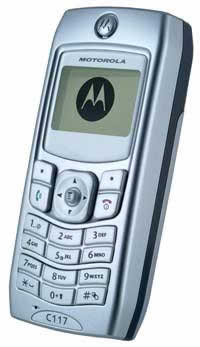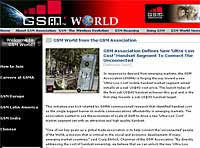 In response to demand from emerging markets the GSM Association (GSMA) is forging the way toward for a new ‘Ultra-Low Cost’ mobile handset market, producing sub-US$40 (Euro 31, £21) handsets. Some of the more cynical observers are wondering if this is an attempt to create a demand, or an early move to ensure a toehold in the potentially lucrative emerging market.
In response to demand from emerging markets the GSM Association (GSMA) is forging the way toward for a new ‘Ultra-Low Cost’ mobile handset market, producing sub-US$40 (Euro 31, £21) handsets. Some of the more cynical observers are wondering if this is an attempt to create a demand, or an early move to ensure a toehold in the potentially lucrative emerging market.
This initiative was kick-started by GSMA-commissioned research that identified handset cost as the single biggest barrier to mobile communications affordability in emerging markets.
Although we can’t help questioning the need to commission an entire study just to discover that ‘poor people can’t afford handsets’, the GSM Association aims to use the economies of scale of GSM to drive a new ‘Ultra-Low Cost’ market segment.
The GSMA brought together a group of its operator members that serve emerging markets to create critical mass through a special procurement initiative.
“One of our key goals as a global trade association is to help connect the ‘unconnected’ people of the World, a mission that is critical to the social and economic development of many emerging market countries,” said Craig Ehrlich, Chairman of the GSM Association. “By directly addressing the cost of handset ownership, we believe that we can unlock the new ‘Ultra-Low Cost’ market segment.”
The operators participating in this stage of the initiative are: AIS Telecom, Bharti Televentures, Globe Telecom, Maxis Mobile, Orascom, SingTel Mobile, Smart Communications, Telenor Mobile and Turkcell. Together, they represent significant presence in Eurasia, the Arab World and Latin America.
A handset specification and tender was issued to 18 different handset vendors, with Motorola’s family of products (built on its new, ultra-low cost C114 platform) being selected.
The handsets are optimised for their durability, long talk time, and design preferences of emerging markets and Motorola has committed to start delivering these products during the second quarter at a price point below $40 (ex factory) – with a strategic intent to work with GSMA members to develop follow-on products at sub $30 (Euro23.10, £15.89) price points.
Once shipments begin, the initial unit volume target for the first six months is a massive 6 million handsets, which equates to around 1 percent of the global handset market.
As economies of scale kick-in, this new market segment has the potential to add more than a 100 million new connections per year.
Motorola’s Chief Executive Officer, Ed Zander comes over all touchy-feely in the announcement:
“Connecting the unconnected with new Ultra-Low Cost, high quality, beautifully-designed handsets is a critical component of Motorola’s growth strategy – and it is the right thing for us to do as a good global citizen. We are delighted to have won the opportunity to seamlessly partner with the GSMA and member operators to deliver the magic of mobile communications to those who have never experienced it.”
(Note: Motorola had sales of US $31.3 billion (Euro24.1 billion, £16.5 billion), in 2004).  The next stage of the project will see the project extended to other emerging market operators, while more vendors will be encouraged to supply terminals for this sizable segment.
The next stage of the project will see the project extended to other emerging market operators, while more vendors will be encouraged to supply terminals for this sizable segment.
According to GSMA estimates, in the region of 80 percent of the world’s population have wireless coverage but only 25 percent use mobile services.
By bridging the gap between supply and demand, the GSMA hopes to accelerate mobile penetration into a user segment currently seen as financially unrewarding.
“This announcement is just the beginning,” enthuses Conway, Chief Executive Officer of the GSMA .
“We also believe that the creation of the ‘Ultra-Low Cost’ market segment represents a significant step towards a sustainable business case for all players in the supply chain. Our mission is to aid economic and social development, by ensuring more people than ever before benefit from mobile communications.”
The mobile usage equation has three major elements: handset, service provision and regulatory / tax requirements.
While the GSMA is working with operators and vendors to address the first two, the third requires serious government support to lower taxes and regulatory requirements.
The GSMA will be reaching out to governments and regulators across emerging markets towards this goal.